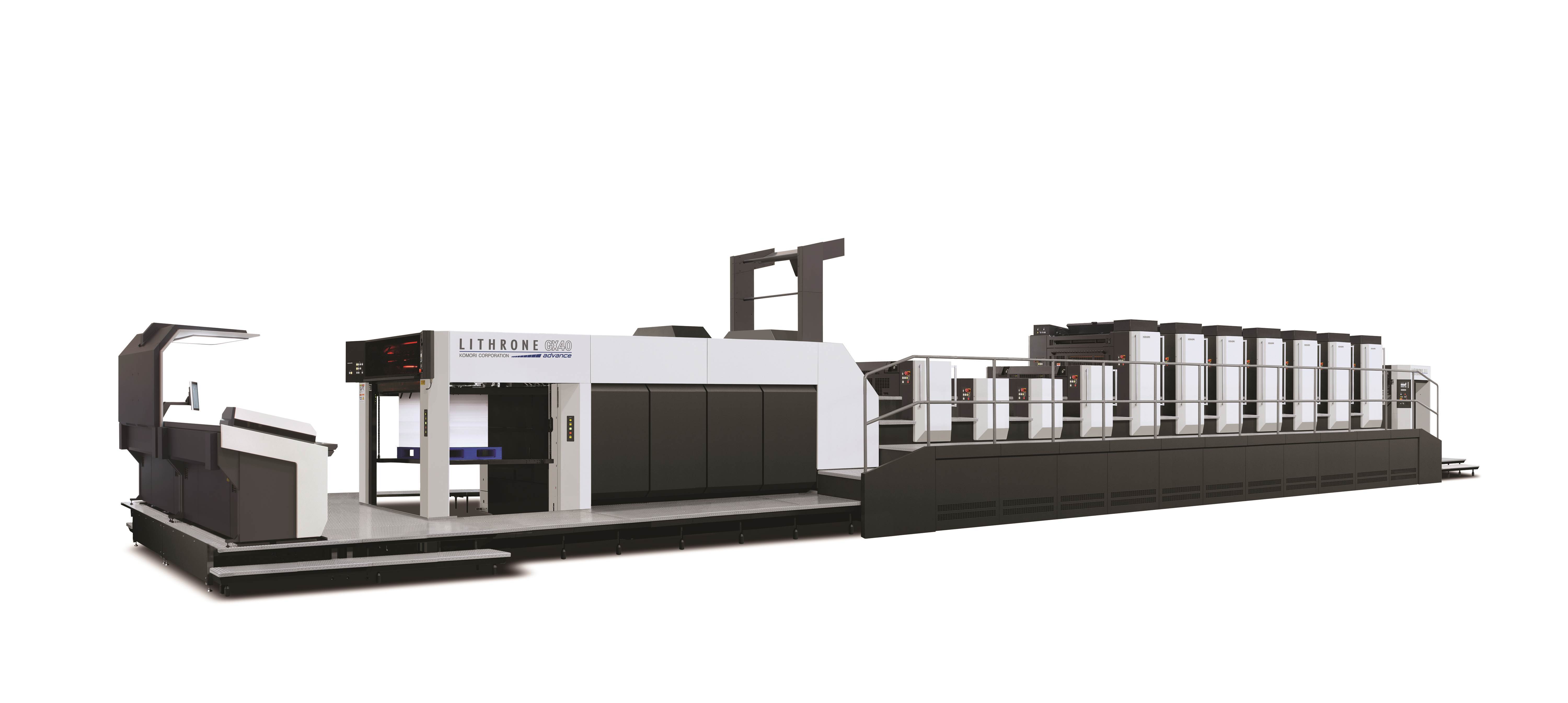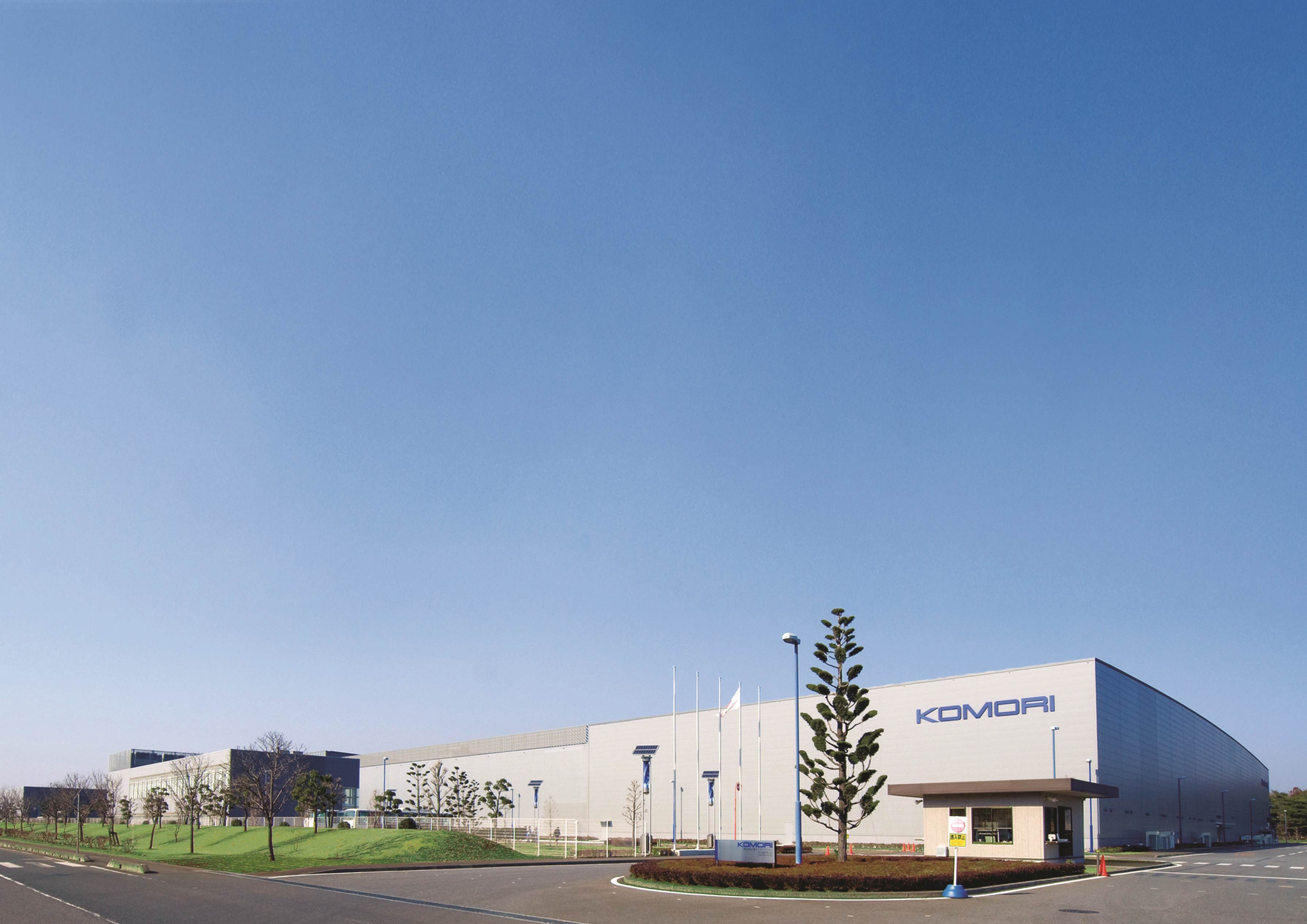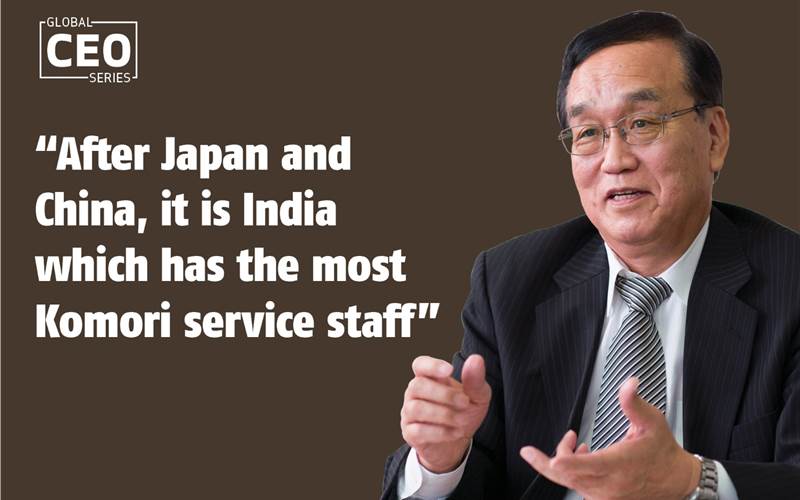“After Japan and China, it is India which has the most Komori service staff” - The Noel D'Cunha Sunday Column
In the words of Komori’s chairman, Komori’s basic idea is that the sales department sells the first machine, the factory sells the second machine, and its service sells the third machine, Satoshi Mochida, president and CEO, Komori Corporation Japan, explains. Read more in this Sunday Column
24 Mar 2023 | By Noel D'Cunha
PrintWeek (PW): 2022 is behind us. What does your 2022 report card say?
Satoshi Mochida (SM): 2022 was the year of the new normal, and the recovery of international business confidence. However, the business struggled in the second half of the year due to the impact of the zero-Covid policy in China. As a manufacturer, in addition to the global semiconductor shortage, soaring steel and energy costs have had a major impact on manufacturing costs. The effect of the weaker yen (a tailwind for overseas exports for our company) worked in a favourable direction, but we should not count on this.
PW: The years 2020 to 2022 have been volatile. How has it been for you, expansion or status quo? Lessons learnt?
SM: The economic slowdown caused by Covid-19 affected us in the same way. Digitalisation made progress due to Covid-19, and what is and is not necessary became clear. I think the same thing is happening in the printing business. There are still a lot of necessary printed materials, and we believe that paper media has great potential.
PW: What does the concept of customer development mean to you? What is the coolest customer development case study you can share with us?
SM: Now is an age in which it is difficult to develop products that can dominate globally with just one product or specification. We believe that customer development is about creating products that meet customer needs in each market and creating new business models with customers. In these circumstances, we believe problem-solving, especially in Asia, is one of the strategies that Komori should pursue.
PW: The K in Dusseldorf and Labelexpo in India concluded on a high note. Three important exhibitions are lined up in 2023 and 2024, Labelexpo Europe in Brussels plus Interpack/Drupa in Dusseldorf. What should we expect from you at these shows?
SM: At this moment, we are planning to exhibit at Drupa. Other exhibitions are undecided, but Komori will promote automation that eliminates simple work from the manufacturing site and maximises labour productivity based on the concept of connected automation. At IGAS, held in Japan in November 2022, production visualisation and process linking using KP-Connect, Komori’s IoT cloud, autopilot for fully automated operation of printing presses, and logistics using a palletising robot and an AGV were demonstrated and well received.
In addition, I wish to strongly promote our efforts to address environmental issues. I would like to express specifically what Komori can do to address the issue of rising energy costs, which is a worldwide topic recently, and ultimately to achieve a carbon-neutral society.
PW: Are paper, paperboard, and label converters still managing business and manufacturing operations with industrial-age practices despite being a part of the knowledge age? Is there a knowledge gap in our industry? How do we bridge it? How do we convince Gen Z about the clout of ink on paper?
SM: As I mentioned, paper media is undergoing major changes since the outbreak of Covid-19. Currently, with the problem of eliminating plastic, paper containers are booming, and paper media is enduring by changing with the times. I think we are getting closer to products that directly appeal to consumers each time. I can’t imagine exactly what kind of paper media will emerge in the future, but I believe that printing technology and paper media will become even more closely related to the B2C business.

Komori Lithrone GX 40 press
PW: Today, what are the industry standards for overall equipment efficiency (OEE)? What type of return on investment should we expect from an OEE program?
SM: We can use KP-Connect to understand the operating rate of printing companies, but the OEE operating rate is generally low and varies greatly depending on the printed material (merchandise). I think OEE is effective if it is used as an index for a single company, but I think it is necessary to examine carefully to compare it with other companies and set general target values. We would like to visualise the production process more broadly, calculate the cost of each sheet, and enable judgments based on profit per hour.
PW: India is a price-sensitive market, yet the trends are forever changing. As a mass producer of products, how does one stay relevant, and what innovations in products can one offer for consumers to create trends or disrupt the marketplace?
SM: Looking at India’s demographic trends, I believe that India will become a centre of global consumption in the future. Markets with growing populations tend toward standardised trends, but in today’s digital society, information from throughout the world reaches individuals. It might be best to quickly incorporate worldwide trends and provide them in a form that matches the Indian people.
PW: Do you see remanufacturing as a comparable option? One post-press equipment manufacturer has successfully repurposed binderies in the Indian market. What’s your view – advantages versus disadvantages?
SM: Of course, the basic parts of printing presses are manufactured with durability that lasts for decades. We believe that remanufacturing is important in terms of acquisition costs and the environment. However, there is a large difference in productivity between modern machines and those from 10 years ago. Of course, the quality is improving dramatically.
Using remanufactured machines involves worrying about breakdowns and quality while using new machines changes the motivation of employees. We believe that the total cost of ownership (TCO) is higher for new presses. Also, when purchasing a remanufactured machine, we hope the user will purchase a product that has a manufacturer guarantee from Komori.
PW: The F&B packaging market in India is expected to grow from USD 33.2-billion in 2020 at a CAGR (compound annual growth rate) of 9.3% until 2026. We did a basic calculation that the consumption of packaged foods in India rose by 200% during the previous ten years, from 4.3-kg to 8.6-kg per person per year. Additionally, the beverage industry accounts for around 23% of all PET applications in packaging. The point is, consumption patterns are high in India. How does one manage a circular economy under such circumstances?
SM: For this, the only way is for all companies and individuals to raise their environmental awareness and deal with it under the initiative of the government. However, I believe that the printing industry is close to this activity. By changing from film to natural materials such as paper, and by making excessive packaging simpler and more functional, the printing industry can become a leader in creating a recycling society.
PW: How do you address greenwashing as part of your sustainability / circular economy communications?
SM: We are mainly a B2B business, and the environmental appeal of our products is rarely linked directly to the purchasing behaviour of consumers (purchasers). We plan to expand the supply of environmental information in the future, and we are trying to clearly put forward the facts based on actual data.

The Tsukuba plant consists of the factory, a research centre, KGC - a training centre, and facilities that benefit the employees
PW: The structural design of packaging, which embraces a pack’s shape, texture, materials, and product delivery capability, has mostly stayed the same. How should the industry approach structural packaging innovation? Through new product formats; new offerings like paneer and craft beer; eco-friendly, increased shelf life - MAP (modified atmospheric packaging?
SM: To take Japan as an example, despite a high cardboard recycling rate, many people still dispose of paper packaging as household waste. In terms of materials, we believe surface processes, such as PP film laminating, which is applied to improve the durability of, and waterproof paper containers and the use of plastic materials to show the contents will be reconsidered in the future.
One of these counter-measures is to create a design that encourages recycling while promoting the use of paper for packaging. In addition, the amount of paper made from waste materials (bagasse from sugarcane materials, apple tree branches cut down for growth, bananas, fallen leaves, etc) is expected to increase in the future. I hope that such a paper will be specified for packaging products from the planning stage.
Furthermore, paper container packaging in Japan is considered excessive in quality, such as a large number of individual packages, compared to other countries. In addition to being very strict about forming quality, a large quantity of inventory is often kept in anticipation of additional orders. As a result, a great deal of waste is due to defects and design changes.
We believe that digital printing systems will be a new solution for promoting on-demand printed products for packaging. By producing the necessary amount, we believe that we can handle smaller lots and convert to a system that does not carry inventory.
PW: The Government of India has set a vision of a USD 5-trillion economy. In your view, what are the opportunities for the print and packaging industry, and your organisation, in India?
SM: Of course, we also think that India will become a major market in the future. Our establishment of a local subsidiary in India in 2018 was in anticipation of this. However, the challenges faced by the Indian market are different from those of developed countries and areas. We believe that it is necessary to have a deep understanding of the printing industry and business in the Indian market, grasp the issues firmly, and introduce products suitable for India. One example is the Enthrone series of small sheetfed presses currently being shipped to India.
PW: As and when the present USD 3.1-trillion economy grows to a USD 5-trillion economy, the Indian printing industry, particularly the packaging industry, will see substantial growth. One number says, the packaging consumption in India has increased 200% in the past decade, rising from 4.3-kg per person per annum (pppa) to 8.6-kg pppa as in FY20. How prepared are you to support the print and packaging factories in India?
SM: As manufacturers introduce products for the Indian market, it will inconvenience our customers if we cannot provide after sales services suitable for the local market. The number of service staff in India is already next only to Japan and China, and the number is increasing every year. In the words of Komori’s chairman, “Komori’s basic idea is that the sales department sells the first machine, the factory sells the second machine, and its service sells the third machine.”
PW: In India, too many business owners talk about their machines and investments. Few focus on soft power. For example, culture, team-building, delegating, housekeeping, plus how to get optimum conversion costs and be much more efficient. Your view?
SM: I think it’s proof that consumption power is vigorous in the economy. If consumption power declines, the one-way power of firms is dispersed. In this case, soft power helps a lot. By defining the company’s mission and vision and clarifying the employee code of conduct, it becomes possible to direct the vector of these dispersed employees in one direction. I think it is important to make such efforts while consumption power is strong. It will lead to great assets for the future.
PW: One takeaway from your autobiography (if you write one) ...
SM: Persistence pays off.
Satoshi Mochida: at a Glance
Fav most app?
Teams.
Besides your phone and wallet, what are a couple of must-have items you always carry?
A handkerchief.
Window or aisle seat?
Window seat.
Snack or meal?
Meal.
Cocktail or diet drink?
Cocktail.
SUV or luxury?
SUV.
What’s the current author you are bingeing on?
DT Suzuki (An Introduction to Zen Buddhism).
One celeb who you met who has impressed you?
Chiune Sugihara (for his humanity and strong will).
First thing you notice in a biz meeting?
Mistaken views due to prejudice and superficial analysis.
One question you always ask when you are hiring?
Language ability.
What’s the one thing you wish you knew at age 21?
Problems can be discovered for the first time by describing an ideal.
What’s the best piece of advice you’ve received?
Hold firm to one’s principles.












 See All
See All